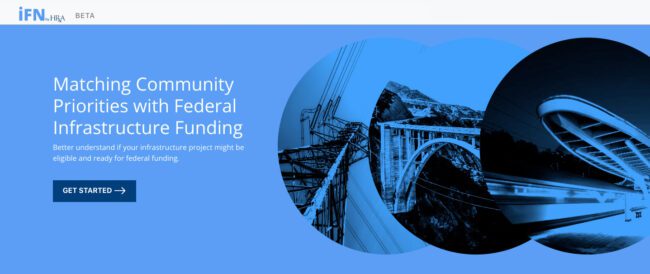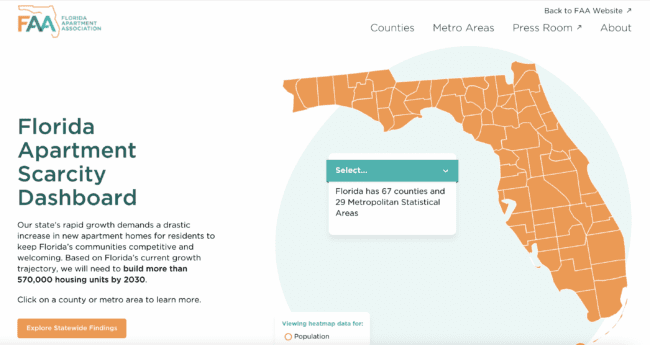Tackling the complex challenges facing our cities requires dynamic tools that offer real-time insights. We work to analyze the scale and scope of urban data to drive decisions with interactive and updated dashboards, spatial analysis, and policy calculators. As datasets that record and track urban life continue to proliferate, we understand the need for decision-makers to drive insights that continuously improve economic, policy, and equity outcomes for residents. On behalf of our clients we:
-
- Develop dashboards to monitor and track housing market conditions, drive policy advocacy, and measure progress.
- Build interactive calculators to demonstrate the impacts of development policies on a range of economic, affordability, and real estate indicators.
- Transform plans and reports into narrative-driven interactive websites that advocate for progressive policy outcomes, help communities identify federal funding opportunities, demonstrate real estate opportunities, and project long-term economic trends.
Recent Digital Products
HR&A is excited to announce the launch of HousingWeaver — a data analytics platform built by housing experts for housing professionals, city leaders, planners, economic development researchers, advocates, and community members to better understand and respond to their housing challenges. After nearly 50 years of working with clients to support their housing goals, HR&A packed all that expertise into HousingWeaver to help you understand and respond to your housing challenges.
HR&A’s Broadband & Digital Equity Team developed an interactive website designed to visualize the State’s efforts to close digital gaps in their state in collaboration with the Texas Broadband Development Office. The Texas Digital Opportunity Hub represents the culmination of a year of community consultation, data collection and analysis, and strategic planning, and brings the Texas Digital Opportunity Plan to life through interactive data visualizations and storytelling. The Hub transforms the lengthy plan into an interactive user-friendly tool that showcases how the state plans to connect all Texans to reliable, high-speed internet and ensure they have the skills and resources needed to benefit from technology access. This resource improves transparency and deepens stakeholder trust in the Office and its activities.
Infrastructure Funding Navigator Beta
HR&A has been working for decades with clients of varying scales, geographies, and sectors to secure and navigate federal funding opportunities for social infrastructure, parks and open space, public transportation, and broadband infrastructure. The Infrastructure Funding Navigator (IFN) Beta is a free tool that leverages this experience to help local communities identify, pursue, and stay updated with the latest federal funding opportunities for infrastructure projects. It filters 350+ federal infrastructure funding and financing programs and allows users to self-administer a project readiness assessment for alignment with five federal priorities.
Florida Apartment Scarcity Dashboard
The Florida Apartment Scarcity Dashboard is a tool for residents and policymakers to track Florida’s rapidly growing housing needs at the county and metro-area level. This dashboard was developed by the Florida Apartment Association in partnership with HR&A Advisors, using data and estimates from the Census Bureau, the Florida Office of Economic & Demographic Research, and other sources of high-quality demographic and real estate information.
Heat Action Platform Policy Tool
The Heat Action Platform Policy Tool is an interactive online tool that provides local governments with a tailored set of potential heat resilience interventions, including both the technical solution and the policy lever through which it can be implemented. HR&A supported the Atlantic Council Adrienne Arsht-Rockefeller Foundation Resilience Center to develop the Tool for use by cities anywhere in the world across a variety of climate and development contexts to support planning locally appropriate heat resilience and adaptation interventions.




